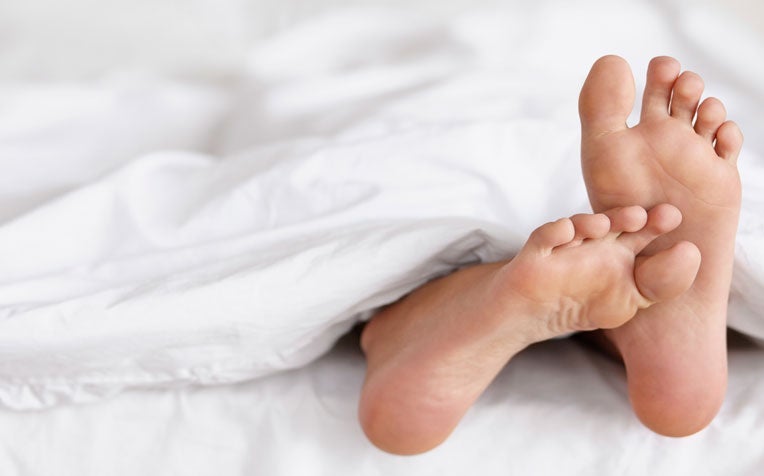
Leg pain at night? It could be restless leg syndrome (RLS).
If you experience leg pain and have an irresistible urge to move about to relieve the pulling, prickling and itching sensations in your legs, you may be suffering from a neurological condition called restless legs syndrome or RLS.
The leg pain or discomfort worsens in the evening, at night and when you are sitting, resting or lying down. Moving the legs temporarily relieves the symptoms and prevents the legs from jerking involuntarily.
“People with restless legs syndrome often suffer from insomnia because they are kept awake by this sensation of pulling or crawling itch. Unlike normal leg cramps which can be relieved by resting, RLS requires you to move or walk to get symptom relief,” says Dr Prakash Kumar, Senior Consultant, Department of Neurology, National Neuroscience Institute (NNI), a member of the SingHealth group.
The specific cause for these pulling, prickling sensations in the lower legs is unknown, but it is likely to be genetic if it happens at an early age.
People with iron-deficiency anaemia or who have an imbalance of dopamine, a brain chemical which controls muscle movements, are more prone to RLS, adds Dr Kumar.
Medical conditions such as diabetes, kidney failure and peripheral neuropathy may trigger RLS. It is also more common in pregnant women and older people.
Symptoms of restless leg syndrome
Persistent, uncomfortable sensations in your calves, legs and feet may be mild and transient or severe and regular. Look out for these symptoms:
- Urge to move the legs
- Pulling, tingling or prickling sensations
- Restlessness
- Worsening at night
How is restless leg syndrome diagnosed?
Doctors diagnose RLS through physical examination, review of patient’s symptoms and medical history, and blood tests to rule out other underlying medical conditions such as iron-deficiency anaemia and peripheral neuropathy.
Restless leg syndrome treatment
If there are underlying medical causes for RLS such as iron-deficiency anaemia, doctors will treat these conditions first.
The following lifestyle changes are recommended for mild cases of RLS:
- Increased physical exercise, particularly walking and stretching
- Regular sleep schedule
- Leg massages
- Hot baths
- Lower caffeine and alcohol intake
Applying cold or heated packs may ease the symptoms.
To treat more severe symptoms, doctors may prescribe painkillers, muscle relaxants or sleep medications to give some relief, but these do not completely eliminate the leg pain and other uncomfortable lower leg sensations.
Medications used to treat Parkinson’s disease may be prescribed to correct any dopamine imbalance, should this be the cause for RLS.
Nutritional deficiencies in vitamin B, folic acid (vitamin B9) and magnesium may trigger RLS. Take more vitamin B-rich foods such as oats, nuts, beans, legumes, whole grains, leafy greens, fish, poultry and red meat. Magnesium-rich foods include spinach, pumpkin and sunflower seeds.
“Restless legs syndrome is not life-threatening but it is a lifelong condition. Patients with RLS can still have a normal life by adjusting their lifestyles to cope with the symptoms. Travelling long distances may worsen RLS. Don’t sit too long, try to get up and walk about, and make frequent stops when driving long distances,” says Dr Kumar.
Ref: S13













 Get it on Google Play
Get it on Google Play